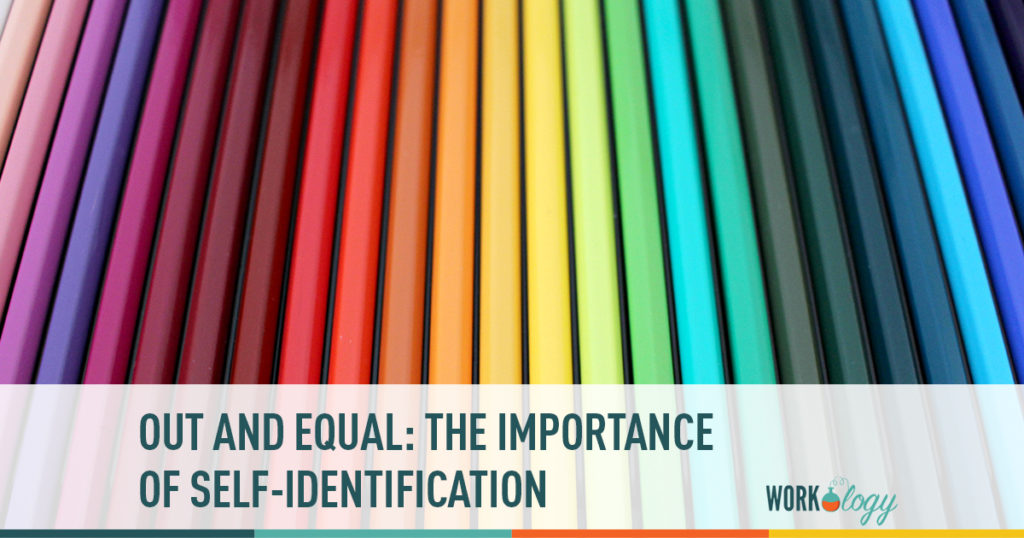I recently attended the Out and Equal Workplace Summit in Philadelphia. As a member of the LGBTQ+ community, I jumped at the opportunity. I knew that the fanfare and celebration would speak to me on a personal level but I was pleasantly surprised at the number of takeaways that resonated on a professional one. Between speakers and workshops, I walked away with a newfound understanding of the work being done across Fortune list companies and the impact this work has on the bottom line. There were plenty of “ah-ha” moments but none spoke to me quite as deeply as the paradigm shift centered on the importance of self-identification. I started my week as someone who always felt as though there is a degree of exclusivity in the attempts to be inclusive, especially when it comes to identity prompts in the application process. I left this conference as someone who not only recognizes the value but sees it through a lens of urgency. Here’s why:
Data Matters
It seems so impersonal to quantify someone’s personal identity. How can we expect employees and applicants alike to openly raise their hands when the workforce climate has not been and still may not be a receptive space? It’s easy for those of us who operate within somewhat of a protective bubble surrounded by a supportive team to look to the masses shouting, “Come on, and stand up! It’s so important!” I acknowledge that and I certainly would never ask someone who does not have the same resources available to them to run from conference room to conference room parading a rainbow flag. Sometimes, it really is about job security and safety. However, I am cognizant of the importance of companies providing that option and tracking the metrics pertaining to all underrepresented groups. How can we respond to unfair treatment, inconsistencies across the enterprise and other red flags if we can’t provide an accurate portrayal through concrete data? How do we address turnover or lack of upward mobility? How can we wrap our arms around the successes and areas of opportunity? How can we assure our team members that we are dedicated to building an inclusive culture if we can’t measure our own progress?
Providing the Necessary Resources
Many company representatives at the event spoke to the changes recently made to policies, coverage and resources available to their employees. The shift came as a result of taking inventory. Many were not providing the type of support that their employees needed. They worked collectively and with their respective insurance providers to rework the parameters that had become somewhat antiquated. They’ve started to host open forums in which all employees can safely identify and discuss their experiences on both a professional and personal level without fear of backlash. Without the ability to take a pulse, certain needs go unacknowledged, resulting in discontent and sadly, increased turnover across certain demographics. Companies cannot address these issues without first understanding the impact they have on the employees they affect the most.
Leading by Example
So often we look to leadership to set the cultural tone. If a message isn’t coming directly from the top it can get lost in the cracks of bureaucracy and differing agendas. The CEO of Comcast, one of the many companies that sponsored the event, took the stage as an ally who believes firmly in this mission. He spoke to the importance it holds to the overall health of the company as well as to his dedication to serving as an unfaltering resource to his openly gay son. Diversity and Inclusion seems so simple to some but there are many out there who are firm in their counter beliefs. That’s okay, that’s a realistic part of life and learning to play well together in the sandbox. That line between “it’s part of life” and “it’s a detriment to our broader employee population” however, is a thin one and oftentimes needs solidification from the top. Leading by example is a piece to a pretty complex puzzle but it is crucial to ensuring that all employees not only feel accepted but celebrated for their differences in opinion, perspective and lifestyle.
Today’s political arena calls for an institutional acknowledgment. One that assures all of us that is okay to bring our entire selves to work. I encourage those who drive company-wide agendas to openly identify as a proud member of their communities, ally or otherwise. Set the tone for safe spaces, they don’t build themselves.
In short, we’re operating in a time during which different perspectives and life experiences cultivate a more productive and forward thinking workforce. Clients and applicants alike want to see themselves reflected in the companies they work for and alongside. The “old way” is no longer constructive, that’s not news but it’s not a queue for middle-aged white men to get out of the way, it’s a queue for them to leverage their privilege for the greater good. Set the tone, walk the walk or get left behind.







